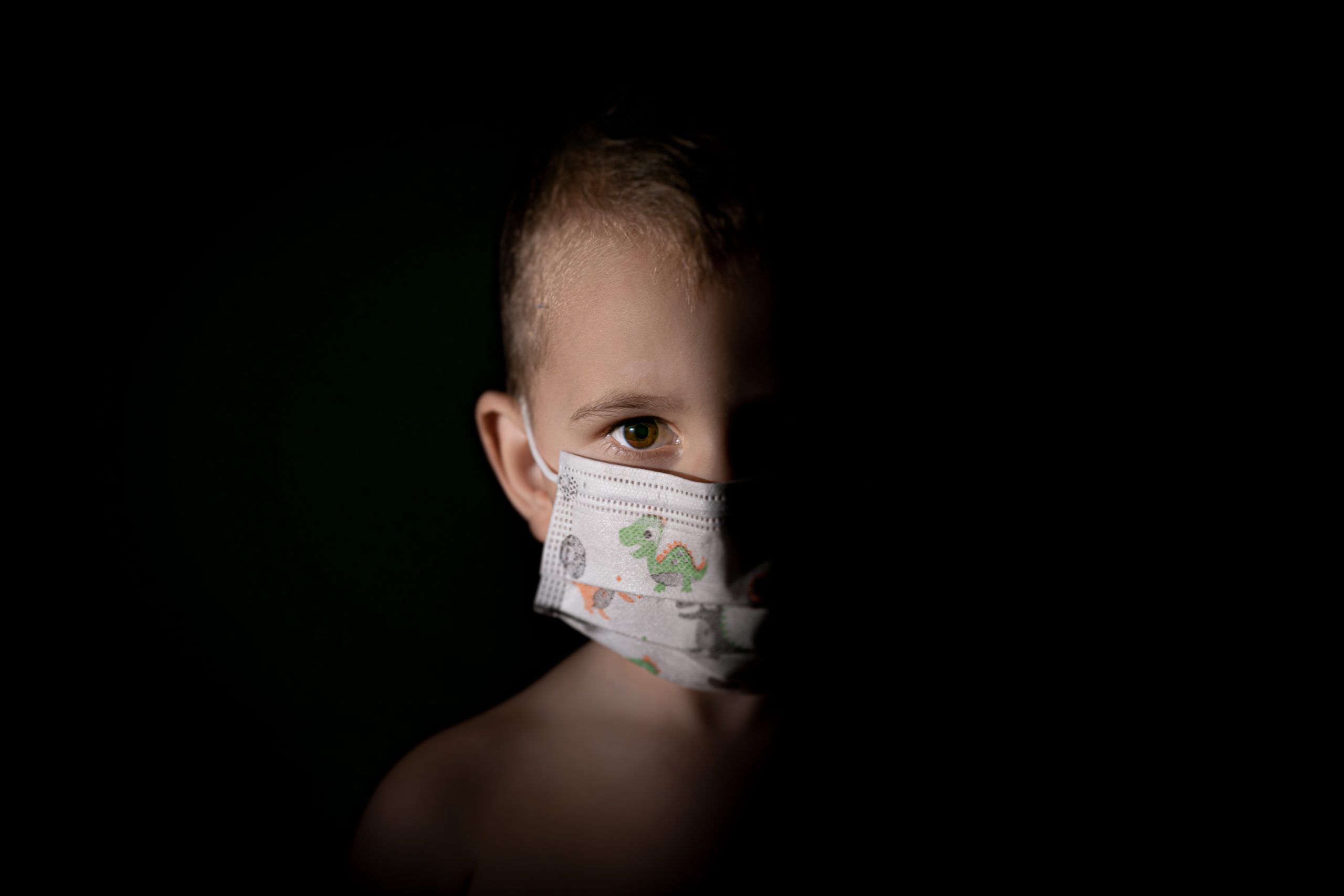This article is part 2 of a two-part series. Part 1 presented the importance of putting attention on children as a vulnerable population. Part 2 dives into types of disasters, with specific examples (e.g., COVID-19, Hurricane Maria) and their influence on children.
Abstract
The homeland security agenda of a nation should always include a serious consideration of the specific needs of children. Given that disasters are on the rise across the globe, and that children have certain vulnerabilities that make them more prone to the deleterious effects of disasters, it is important to progressively review exactly how each type of disaster can affect children. This article reviews and summarizes the effects of different disasters on the wellbeing of children. Particularly, epidemics exert direct physiological pressures on the health of children, and they weaken their support networks. Natural and man-made disasters share their ability to disrupt critical infrastructure and access to food, sanitation, shelter, security and healthcare. Additionally, they both hold potential to cause direct bodily injury and large population displacements out of disaster zones. Man-made disasters are singular in their higher capacity to weaken law enforcement and financial systems which both result in a heavier burden for children than adults. Therefore, extra care should be placed in disaster mitigation planning to ensure that children are sheltered from these effects.
Epidemics
In general, epidemics must reach a sizable scale before they are considered a homeland security threat or a disaster. Historically, in the United States, many of the responsibilities pertaining to the control of disease frequency have been placed on the shoulders of the Department of Health and Human Services. However, after the terrorist attacks of 2001, agencies in this department have gained increasing responsibility in disaster preparedness and response.1 While other agencies in the department are less directly involved in disaster prevention and response, they all contribute to reducing epidemics in the nation.
Large-scale epidemics that reach disaster proportions are primarily due to infectious diseases.2 Because of their transmissibility and capacity to reproduce, infectious diseases have an unparalleled potential to cause large-scale emergencies. Children are disproportionately susceptible to infectious diseases for several reasons.
Firstly, their incomplete development renders children’s immune systems less effective than the immune systems of adults. Childhood is a period of many first exposures to infectious organisms. During these encounters, a disease is able to progress in the body until an immune response can be mounted. This means that most pathogens have greater severity, quicker progression, and higher death tolls in children. Furthermore, as children develop, their immune systems change. This causes significant logistical challenges in adapting existing vaccines to all age groups.3 The combination of these factors renders children less immune to novel diseases.
Children are also more likely to fall ill if their parents contract a particular infectious disease. This is because of their close proximity and dependence on their parents as well as a generally lower ability to participate in sanitary practices.4 Some infectious diseases are transmitted from mother to child during gestation and nursing; such is the case with HIV and Zika.5 These all represent unique pathways of transmission that affect children preferentially.
Recent disastrous epidemics, like those of influenza, cholera, and COVID-19, all place increased nutritional and hydration strain on their victims by causing higher metabolic demands and symptoms such as fever, vomiting, and diarrhea.6 This partly contributes to disease severity in children who are already more susceptible to malnourishment and dehydration. Additionally, malnourishment and dehydration during famines, droughts, or other emergencies can result in infectious disease epidemics even when these were not a part of the initial crisis.7
Children During the COVID-19 Pandemic
Interestingly, the COVID-19 pandemic has not followed tradition. The virus affects older adults preferentially and is far more devastating in this sector of the population.8 Because children were mainly asymptomatic during most of the pandemic, homeland security considerations pertaining to children extended only as far as their role in spreading the disease.9 For this and other reasons, authorization for children’s vaccines–particularly those under age five–have come late in the evolution of the pandemic.10 This is especially concerning considering that later variants of the virus, like Omicron, have a greater impact on children.
School closings, mask mandates, and social distancing requirements were the first effects felt by children. In later stages of the pandemic, children began to experience the toll of financial hardship, loss of loved ones, and social isolation, in addition to a more serious disease burden.10 Furthermore, since the advent of the pandemic, civil unrest and violence have seen a 10% global increase, with 60% of people fearing they will suffer from violence in the near future. This has been predominantly felt in poorer countries, which leads to a decreased sense of security for children all around the world.11 This has also exacerbated the plight of millions of refugees and displaced groups. The accumulated effect of all of these factors has resulted in high levels of anxiety and depression among children, with increased suicide rates among teenagers.1213
Natural Disasters
The effects of natural disasters on children are best understood by considering their effects on critical infrastructure. Natural disasters have the power to destroy homes, schools, hospitals, and roads, leaving children and their families exposed to the direct forces of nature and estranged from services that may ease their plight. An important example of this is the estrangement of children from medical facilities that can treat pre-existing conditions as well as disaster related injuries.14 Additionally, natural disasters often lead to interruptions in preventive services and regular childhood vaccination schedules, resulting in disease outbreaks.15 The destruction of critical infrastructure includes destruction of water sanitation facilities, thereby exacerbating illness and disability, and supply chain disruptions make it hard to sustain the delivery of food and other essential products, such as fuel and medications. Various psychological, social, and developmental implications are also caused by the disruption of daily routines, weakening of support networks, and seeing close contacts injured or killed by disasters. All of these situations occurred during Hurricane Maria in Puerto Rico and undoubtedly create trauma and long-lasting consequences for children as they progress into adulthood.16
Children and Hurricane Maria
Recent literature concerning hurricanes in the U.S. draws from the experiences of those affected during Hurricane Katrina in 2005. However, an equally devastating hurricane that seems to receive less attention is Hurricane Maria, which struck Puerto Rico in 2017. Due to its recency, this example can shed light on how natural disasters are currently affecting American children. The negative effects of the crisis are still felt by children both on the island and mainland United States. School enrollment data suggests that up to 40,000 children moved from Puerto Rico to the United States permanently after the disaster due prolonged school closures, parents’ lost jobs, and countless other stressors generated by the ensuing humanitarian crisis.17 A study that surveyed 96,000 children on the island in 2018 reported that 17% of children still had no electricity; 29.9% perceived a danger of losing their lives; 32.2% experienced food or water insecurity; 45.7% had their homes damaged; 57.8% had friends or relatives leave the island; and 7.2% were experiencing post-traumatic stress disorder.18
The sheer power of a category five storm–coupled with a predating financial crisis and poor infrastructure maintenance–caused a collapse of the entire electrical grid and large sections of the water supply system, which placed extreme strains on the healthcare system for several months.19 Decades of local government mismanagement and federal underinvestment, exacerbated by the island’s isolated geographical location and its dependence on imported goods, all contributed to the adversities children experienced during and after the storm.20 Previous sections of this article explored disruptions in critical infrastructure, psychological trauma, and bodily injury; therefore, this section explores population displacement along with some particularities of man-made disasters.
Man-made disasters can take many forms and each type of disaster brings its own set of challenges to homeland security officials. Man-made disasters insidious issues, such as deforestation and climate change, and more acute ones, like war, nuclear accidents, terrorist attacks, and toxic spills. They can be generally grouped into intentional or unintentional categories, with relevant implications for the wellbeing of children.21 Insidious and unintentional disasters are more akin to natural disasters and often blur between natural and man-made.22 However, disasters that arise from the intention of humans to hurt one another, such terrorism and war, carry with them deeper psychological implications. They can also be harder to address, because intentions to help those in need are opposed by the intentions of those who seek to cause harm.23
Inherently displaced populations are directly at the mercy of their hosts. Hosting countries and humanitarian agencies routinely attempt to, but fall short of, providing for all of the basic needs of displaced persons. This is because crises that spur the displacement often develop rapidly, and massive numbers of people seeking aid tend to exceed the available resources of any well-meaning host.22 Most displaced populations then live in a state of overcrowding with limited access to food, sanitation, and medical supplies.24 These conditions can lead to disease outbreaks, with particular prominence among children.
An additional threat faced by children and other vulnerable groups in forced displacement is that of security. Families that seek arrangements for transportation out of a crisis zone tend to forego certain safety precautions in their search for deliverance.22 Placing their identity documents, limited financial resources, and children in the hands of would-be benefactors places families in serious danger. This leaves ample room for opportunistic criminals to use force, fraud, or coercion to take advantage of migrating victims unable to defend themselves. Unfortunately, heinous crimes, such as human trafficking, quickly rise during complex emergencies.25 Therefore, children are especially injured by such tragedies; the case is even more serious when children are left orphans or are otherwise separated from their parents.
However, population displacement also represents a threat to the national security of governments that host displaced populations. Countries and local governments who receive asylum seekers, refugees, and other victims of man-made disasters are burdened with the task of expediently deciding who should be granted admission within their borders.22 Inevitably, this facilitates admission of criminals and freeloaders, along with well-intentioned immigrants. Additionally, regardless of their intentions or criminal record, migrants place great strains in the capacity of the host country to provide food, shelter, healthcare, jobs, and education for the sudden influx of people.26 This causes overcrowding of schools and strains government funding of social programs. For poorer governments, this strain can be enough to create financial crises that have ripple effects through the entire population and affect native and migrant children alike.2227
Taken together, disasters of any kind can have significant detrimental effects on the immediate and future wellbeing of children. Beyond the obvious effects of disasters on the population, children represent a vulnerable subpopulation with more propensity to feel the physical, psychological, social, and developmental consequences of such events. Therefore, extra care should be placed in disaster mitigation planning to ensure that children are sheltered from these effects.
In practice, this means that before and during epidemics, steps are taken to prioritize the delivery of resources, like vaccines, personal protective equipment, and medications to families with children, schools, and pediatric healthcare facilities. It should also translate into robust investment in critical infrastructure, such as electricity grids, aqueducts and sewers, supply chains for essential goods, schools, pediatric clinics, and hospitals in order to build their resilience against natural and manmade disasters. Finally, it should mean that resources are made available to ensure the safety of populations being displaced out of their native environments as the result of disasters. This includes strengthening evacuation plans, migration-related law enforcement, and humanitarian relief agencies through resource funding intended for national security purposes, even if it requires investing in programs outside country borders.
- Current State of Global Health Security - August 29, 2023
- Intersections of Humanitarianism and Human Trafficking - October 27, 2022
- Disasters and Their Impact on Children – Part 2 - July 27, 2022
- Federal Emergency Management Agency. (December, 2021). National Preparedness Report. Department of Homeland Security. https://www.fema.gov/sites/default/files/documents/fema_2021-national-preparedness-report.pdf [↩]
- Council on Foreign Relations. (2021). Major Epidemics of the Modern Era. https://www.cfr.org/timeline/major-epidemics-modern-era [↩]
- Child Protection Minimum Standards Working Group. (n.d.). Guidance Note: Protection of children during infectious disease outbreaks. The Alliance for Child Protection in Humanitarian Action. https://resource-centre-uploads.s3.amazonaws.com/uploads/protection_of_children_during_infectious_disease_outbreak_guidance_note.pdf [↩]
- Child Protection Minimum Standards Working Group. (n.d.). Guidance Note: Protection of children during infectious disease outbreaks. The Alliance for Child Protection in Humanitarian Action. https://resource-centre-uploads.s3.amazonaws.com/uploads/protection_of_children_during_infectious_disease_outbreak_guidance_note.pdf [↩]
- Rothan, H. A., Bidokhti, M. R., & Byrareddy, S. N. (2018). Current concerns and perspectives on Zika virus co-infection with arboviruses and HIV. Journal of autoimmunity, 89, 11-20. https://doi.org/10.1016/j.jaut.2018.01.002 [↩]
- Council on Foreign Relations. (2021). Major Epidemics of the Modern Era. https://www.cfr.org/timeline/major-epidemics-modern-era [↩]
- Child Protection Minimum Standards Working Group. (2019). Minimum Standards for Child Protection in Humanitarian Action. The Alliance for Child Protection in Humanitarian Action. https://handbook.spherestandards.org/en/cpms/#ch007 [↩]
- Sun, J., He, W. T., Wang, L., Lai, A., Ji, X., Zhai, X., Li, G., Suchard, M.A., Tian, J., Zhou, J., Veit, M. & Su, S. (2020). COVID-19: epidemiology, evolution, and cross-disciplinary perspectives. Trends in molecular medicine, 26(5), 483-495. https://doi.org/10.1016/j.molmed.2020.02.008 [↩]
- Edmunds, W. J. (2020). Finding a path to reopen schools during the COVID-19 pandemic. The Lancet Child & Adolescent Health, 4(11), 796-797. https://doi.org/10.1016/S2352-4642(20)30249-2 [↩]
- Schleiss, M. R., John, C. C., & Permar, S. R. (2021). Children are the key to the Endgame: A case for routine pediatric COVID vaccination. Vaccine. https://dx.doi.org/10.1016%2Fj.vaccine.2021.08.005 [↩] [↩]
- Institute for Economics and Peace. (2021). Global Peace Index: World less peaceful as civil unrest and political instability increases due to COVID-19. Vision of Humanity. https://www.visionofhumanity.org/world-less-peaceful-as-civil-unrest-and-political-instability-increases-due-to-covid-19-pandemic [↩]
- Phelps, C., & Sperry, L. L. (2020). Children and the COVID-19 pandemic. Psychological Trauma: Theory, Research, Practice, and Policy, 12(S1), S73. https://psycnet.apa.org/doi/10.1037/tra0000861 [↩]
- Racine, N., McArthur, B. A., Cooke, J. E., Eirich, R., Zhu, J., & Madigan, S. (2021). Global prevalence of depressive and anxiety symptoms in children and adolescents during COVID-19: a meta-analysis. JAMA pediatrics, 175(11), 1142-1150. https://doi.org/10.1001/jamapediatrics.2021.2482 [↩]
- Kousky, C., (2016). Impacts of natural disasters on children. The Future of Children, 26(1), 73-92. https://doi.org/10.1353/foc.2016.0004 [↩]
- Eberhardt, C. S., & Siegrist, C. A. (2021). Is there a role for childhood vaccination against COVID-19?. Pediatric allergy and immunology : official publication of the European Society of Pediatric Allergy and Immunology, 32(1), 9–16. https://doi.org/10.1111/pai.13401 [↩]
- Kousky, C., (2016). Impacts of natural disasters on children. The Future of Children, 26(1), 73-92. https://doi.org/10.1353/foc.2016.0004 [↩]
- Meléndez, E., Hinojosa, J., & Román, N. (2017). Post–Hurricane Maria exodus from Puerto Rico and school enrollment in Florida. Center for Puerto Rican Studies. https://centropr. hunter. cuny. edu/sites/default/files/CentroReport-RB2017-02-POST-MARIA-FL-PR-EXODUS, 20(281), 29. [↩]
- Orengo-Aguayo, R., Stewart, R. W., de Arellano, M. A., Suárez-Kindy, J. L., & Young, J. (2019). Disaster exposure and mental health among Puerto Rican youths after Hurricane Maria. JAMA network open, 2(4), e192619-e192619. https://doi.org/10.1001/jamanetworkopen.2019.2619 [↩]
- Rodríguez-Madera, S., Varas-Díaz, N., Padilla, M., Grove, K., Rivera-Bustelo, K., Ramos, J., Contreras-Ramirez, V., Rivera-Rodríguez, S., Vargas-Molina, R., & Santini, J. (2021). The impact of Hurricane Maria on Puerto Rico’s health system: post-disaster perceptions and experiences of health care providers and administrators. Global Health Research and Policy, 6(1), 44–44. https://doi.org/10.1186/s41256-021-00228-w [↩]
- Rivera, F. I. (2021). Analysis of pre-and post-disaster management and recovery in Puerto Rico from Hurricane Maria. Journal of Emergency Management, 19(8), 9. https://www.wmpllc.org/ojs/index.php/jem/article/view/3041/3296))
Man-made Disasters
The intersections between man-made disasters and the wellbeing of children are similar to those of natural disasters in some respects. Like natural disasters, man-made disasters also disrupt critical infrastructure and access to food, sanitation, shelter, security, and healthcare. Similarly, they hold potential to cause direct bodily injury and large population displacements out of disaster zones. ((Marshall, J., Wiltshire, J., Delva, J., Bello, T., & Masys, A. J. (2020). Natural and manmade disasters: vulnerable populations. In Global health security (pp. 143-161). Springer, Cham. https://doi.org/10.1097/01.chi.0000186402.05465.f7 [↩]
- Shaluf, I. M. (2007). An overview on disasters. Disaster Prevention and Management: An International Journal. [↩]
- Marshall, J., Wiltshire, J., Delva, J., Bello, T., & Masys, A. J. (2020). Natural and manmade disasters: vulnerable populations. In Global health security (pp. 143-161). Springer, Cham. https://doi.org/10.1097/01.chi.0000186402.05465.f7 [↩] [↩] [↩] [↩] [↩]
- Shaluf, I. M. (2007). An overview on disasters. Disaster Prevention and Management: An International Journal. [↩]
- You, D., Lindt, N., Allen, R., Hansen, C., Beise, J., & Blume, S. (2020). Migrant and displaced children in the age of COVID-19: How the pandemic is impacting them and what can we do to help. Migration Policy Practice, 10(2). https://www.unicef.org/media/83546/file/Migrant-and-displaced-children-in-the-age-of-COVID-19.pdf [↩]
- Kwanga, G. M., Shabu, T., & Adaaku, E. M. (2017). Natural disasters and crime incidence: A case of 2012 flooding in Benue state, Nigeria. International Journal of Geology, Agriculture and Environmental Sciences, 5(5), 43-48. https://www.woarjournals.org/admin/vol_issue1/upload%20Image/IJGAES051508.pdf [↩]
- Sawada, Y., Bhattacharyay, M., & Kotera, T. (2019). Aggregate impacts of natural and man-made disasters: A quantitative comparison. International Journal of Development and Conflict, 9(1), 43-73. https://tohoku.pure.elsevier.com/en/publications/aggregate-impacts-of-natural-and-man-made-disasters-a-quantitativ [↩]
- Sawada, Y., Bhattacharyay, M., & Kotera, T. (2019). Aggregate impacts of natural and man-made disasters: A quantitative comparison. International Journal of Development and Conflict, 9(1), 43-73. https://tohoku.pure.elsevier.com/en/publications/aggregate-impacts-of-natural-and-man-made-disasters-a-quantitativ [↩]




